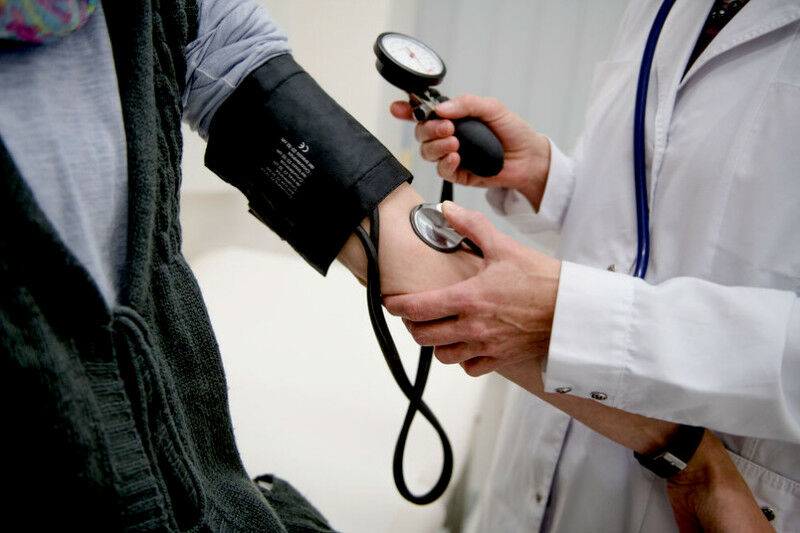博文
烟酸过多会增加患心血管疾病的风险
 精选
精选
||
烟酸过多会增加患心血管疾病的风险
诸平

Fig. 2 Arash Haghikia has moved from Charité in Berlin to Bochum.
据德国波鸿鲁尔大学(Ruhr University Bochum)2024年3月1日提供的消息,美德研究人员合作研究发现,烟酸过多会增加患心血管疾病的风险(Too much niacin increases the risk of cardiovascular disease)。
烟酸(Niacin),也被称为维生素B3,是一种免费的膳食补充剂。为什么有些人即使没有高胆固醇等典型的危险因素,心脏病发作和中风的风险也会增加?一个国际研究小组对受影响的人血液中的循环进行了开放式研究,并将他们与其他人区分开来。研究人员发现了过量烟酸的代谢终产物。“它们通过炎症机制增加心血管疾病的风险,”波鸿鲁尔大学附属圣约瑟夫医院心脏病科主任(Director of the Department of Cardiology at St. Josef Hospital, University Hospital of Ruhr University Bochum)阿拉什·哈格希基亚(Arash Haghikia, Fig. 2)说,他在柏林夏里特医学院(Charité, Universitätsmedizin Berlin)期间参与了这项工作。相关研究结果于2024年2月19日已经在《自然医学》(Nature Medicine)杂志网站发表——Marc Ferrell, Zeneng Wang, James T. Anderson, Xinmin S. Li, Marco Witkowski, Joseph A. DiDonato, James R. Hilser, Jaana A. Hartiala, Arash Haghikia, Tomas Cajka, Oliver Fiehn, Naseer Sangwan, Ilja Demuth, Maximilian König, Elisabeth Steinhagen-Thiessen, Ulf Landmesser, W. H. Wilson Tang, Hooman Allayee, Stanley L. Hazen. A terminal metabolite of niacin promotes vascular inflammation and contributes to cardiovascular disease risk. Nature Medicine, 2024, 30: 424–434. DOI: 10.1038/s41591-023 -02793-8. Published: 19 February 2024. https://www.nature.com/articles/s41591-023-02793-8
参与此项研究的有来自美国克利夫兰诊所勒纳研究所(Lerner Research Institute, Cleveland Clinic, Cleveland, OH, USA)、美国凯斯西储大学(Case Western Reserve University, Cleveland, OH, USA)、美国洛杉矶南加州大学(University of Southern California, Los Angeles, CA, USA)、德国夏里特心脏中心(Deutsches Herzzentrum der Charité, Campus Benjamin Franklin, Berlin, Germany)、德国心血管研究中心{ German Center for Cardiovascular Research (DZHK), Partner Site Berlin, Berlin, Germany}、德国柏林卫生研究所{Berlin Institute of Health (BIH), Berlin, Germany}、德国夏里特弗里德·施普林格心血管预防中心(Friede Springer Cardiovascular Prevention Center at Charité, Berlin, Germany)、德国柏林夏里特医学院(Charité – Universitätsmedizin Berlin, corporate member of Freie Universität Berlin and Humboldt-Universität zu Berlin, Berlin, Germany)、美国加州大学戴维斯分校(University of California, Davis, Davis, CA, USA)、德国柏林再生治疗健康中心(Berlin Institute of Health Center for Regenerative Therapies, Berlin, Germany)、美国克利夫兰诊所心脏,血管和胸腔研究所(Heart, Vascular and Thoracic Institute, Cleveland Clinic, Cleveland, OH, USA)的研究人员。
寻找未被发现的危险因素(In search of undiscovered risk factors)
为了找出哪些以前未被发现、可能在心血管疾病中发挥作用的风险因素,研究小组分析了1000多名心脏病患者的血液样本。他们正在寻找一种小分子,其水平可以预测心血管疾病的可能性,而不受传统风险因素的影响。有两种分子特别显眼。进一步的分析表明,这些物质是2PY和4PY:二者都是过量烟酸的代谢最终产物。
烟酸是一种重要的营养素,也被称为维生素B3。成年人每天应摄入约15 mg。均衡的饮食提供了足够的量。然而,由于许多美国人在20世纪上半叶的大萧条期间遭受了危及生命的缺乏症状,从那时起,烟酸就被添加到面粉和谷物产品中,直到今天仍在添加。由于今天的标准饮食,这导致了人体中烟酸供过于求的局面。此外,烟酸和其他物质在体内代谢产生相同的降解产物,可以作为抗衰老食品补充剂免费获得。
关系是复杂的(Connections are complex)
研究人员进一步调查了这种联系,发现从高2PY和4PY水平到心血管疾病风险增加的途径是通过血管中的炎症过程进行的。
阿拉什·哈格希基亚解释说:“矛盾的是,烟酸可以降低胆固醇水平,并且在过去的临床试验中被测试为降胆固醇剂(cholesterol-lowering agent),但并没有像预期的那样降低心血管疾病的风险。因此,两者之间的关系是复杂的,我们的发现正好符合这种悖论。”
这项工作得到了美国国立卫生研究院美国国家心、肺和血液研究所和膳食补充剂办公室{ National Institutes of Health (NIH) (both the National Heart, Lung, and Blood Institute and the Office of Dietary Supplements: R01HL103866 and P01HL147823; R01HL133169, R01HL148110, R01HL168493 and U54HL170326}、美国南加州大学遗传流行病学中心和南加州环境健康科学中心试点项目计划(Pilot Project Programs of the USC Center for Genetic Epidemiology and Southern California Environmental Health Sciences Center P30ES007048)、德国研究协会(Deutsche Forschungsgemeinschaft WI 5229/1-1)、美国NIH培训补助金(NIH training grants T32 HL134622 and T32 GM007250)、BIH-夏里特高级临床医生科学家计划(BIH-Charité Advanced Clinician Scientist Program funded by Charité – Universitätsmedizin Berlin and the Berlin Institute of Health)、赛诺菲-安万特德国有限公司(The LipidCardio study was partially supported by Sanofi-Aventis Deutschland GmbH)的资助。
上述介绍,仅供参考。欲了解更多信息,敬请注意浏览原文或者相关报道。
Despite intensive preventive cardiovascular disease (CVD) efforts, substantial residual CVD risk remains even for individuals receiving all guideline-recommended interventions. Niacin is an essential micronutrient fortified in food staples, but its role in CVD is not well understood. In this study, untargeted metabolomics analysis of fasting plasma from stable cardiac patients in a prospective discovery cohort (n=1,162 total, n=422 females) suggested that niacin metabolism was associated with incident major adverse cardiovascular events (MACE). Serum levels of the terminal metabolites of excess niacin, N1-methyl-2-pyridone-5-carboxamide (2PY) and N1-methyl-4-pyridone-3-carboxamide (4PY), were associated with increased 3-year MACE risk in two validation cohorts (US n=2,331 total, n=774 females; European n=832 total, n=249 females) (adjusted hazard ratio (HR) (95% confidence interval) for 2PY: 1.64 (1.10–2.42) and 2.02 (1.29–3.18), respectively; for 4PY: 1.89 (1.26–2.84) and 1.99 (1.26–3.14), respectively). Phenome-wide association analysis of the genetic variant rs10496731, which was significantly associated with both 2PY and 4PY levels, revealed an association of this variant with levels of soluble vascular adhesion molecule 1 (sVCAM-1). Further meta-analysis confirmed association of rs10496731 with sVCAM-1 (n=106,000 total, n=53,075 females, P=3.6×10−18). Moreover, sVCAM-1 levels were significantly correlated with both 2PY and 4PY in a validation cohort (n= 974 total, n=333 females) (2PY: rho = 0.13, P=7.7×10−5; 4PY: rho = 0.18, P=1.1×10−8). Lastly, treatment with physiological levels of 4PY, but not its structural isomer 2PY, induced expression of VCAM-1 and leukocyte adherence to vascular endothelium in mice. Collectively, these results indicate that the terminal breakdown products of excess niacin, 2PY and 4PY, are both associated with residual CVD risk. They also suggest an inflammation-dependent mechanism underlying the clinical association between 4PY and MACE.
https://blog.sciencenet.cn/blog-212210-1423851.html
上一篇:研究揭开了设计下一代太阳能电池的纳米级秘密
下一篇:创新的癌症治疗使用超声激活药物靶向
